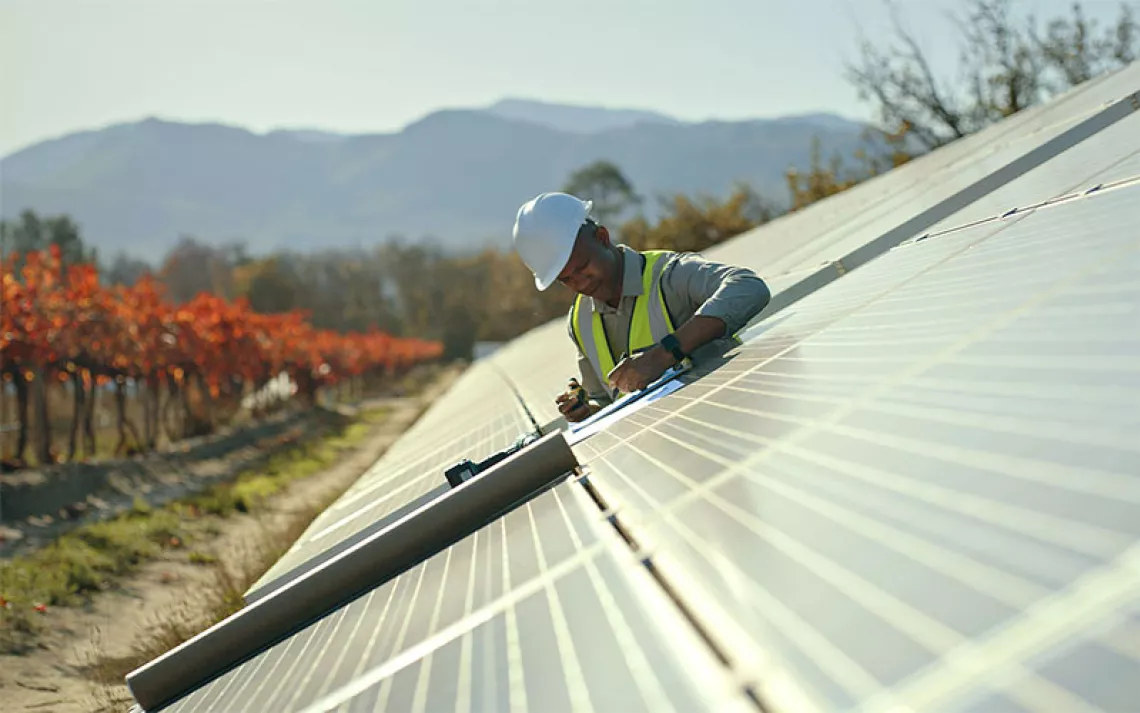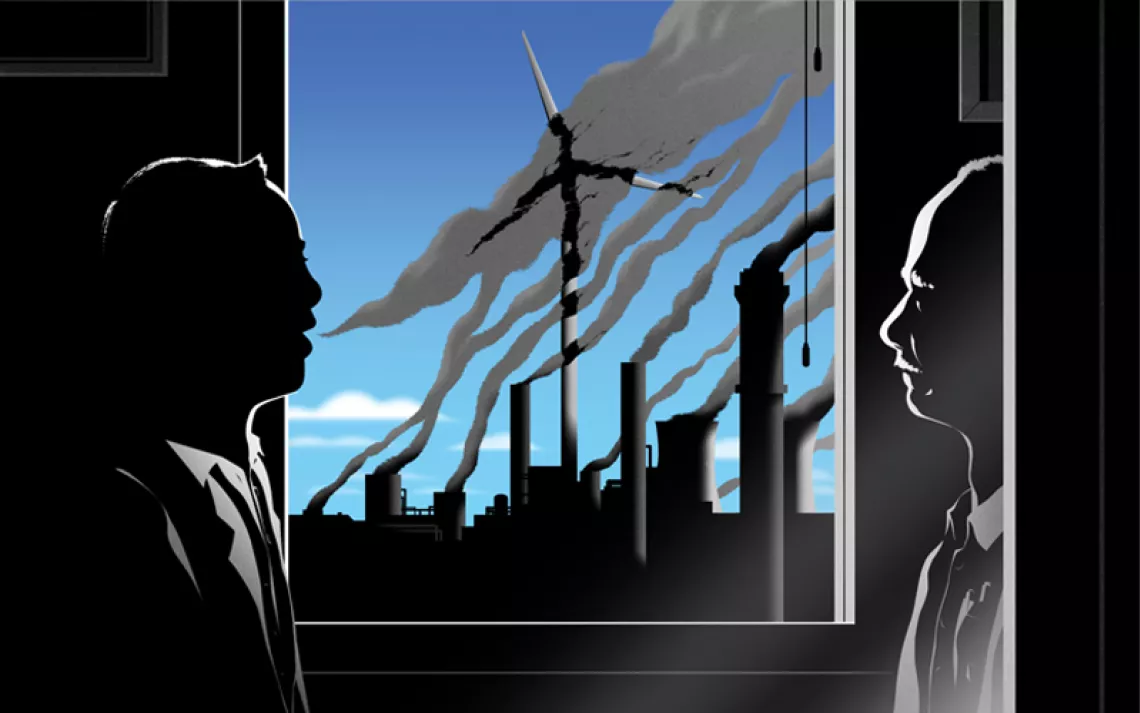California Tribe's DIY Electric Grid
Rather than risk losing power in a wildfire, this tribe made a microgrid
Adapted from an interview with Jana Ganion by Heather Smith.
I was working at a private insurance firm in Sacramento, California, and the Blue Lake Rancheria tribe in Humboldt County came in to look for insurance coverage. I got to know them, and they got to know me. I found that working with a tribal government is much more interesting than insurance. Go figure.
I became communications director for the tribe in 2004. I also became part of the project management team for this hotel the tribe was building. We were looking for ways to increase efficiency. What kind of hot-water tanks are we using?⎯those kinds of details.
The building became the first hotel in California to be used as an energy efficiency model by Pacific Gas and Electric. It turned the tribe's head to the fact that it could spend a little bit of money up front on sustainability efforts and really reduce its costs of doing business over the long term. I thought, "I really would like to do more of this work."
I took advantage of the online curriculum offered by the Department of Energy and the Office of Indian Energy Policies and Programs, and I just laser-focused on the goals and what I needed to do to achieve them. In 2013, I started working full-time on sustainability and government affairs for the tribe.
In September 2014, I got a call from Peter Lehman, the founding director of the Schatz Energy Research Center at Humboldt State. "You know, I had this crazy idea," he said. "Would you be interested in doing a microgrid?"
Many tribes in California⎯and across the country⎯don't have access to the electrical grid, and never have. Where tribes are connected to the grid, a lot of them are at the end of the distribution line. So when things happen, their infrastructure is prioritized below more populous areas' and other needs of the electrical grid. It's a chronic problem for tribes.
Here at Blue Lake, we're at the end of the line. We get a lot of outages because of landslides or wildfires and will get more with this new regime where PG&E is going to de-energize transmission lines when conditions could lead to fires. In the last few years, wildfire conditions have been just terrible. Everything's just too dry. We're getting wildfires even on the coast, where typically we haven't had to worry about them.
We have tribal government offices here. We have a hospitality and gaming complex that has to run 24/7. We are also an American Red Cross–certified shelter. So in an emergency, we want to make sure we have power.
The Idaho National Lab and Siemens had been working together on a microgrid project⎯solar panels combined with batteries. They contacted Peter and said, "Hey, do you know of any community that would be a good host site?" The tribal government had a reputation for being a good partner and being able to invest the required matching funds.
We debated whether we were willing to take the risk. A community microgrid of this complexity is no small thing. You can't anticipate and budget for every detail. None of these grids are off-the-shelf.
The tribe is now saving between $150,000 and $200,000 per year in electric bills. We still buy power from PG&E, but we provide 20 to 40 percent of the power for our government offices, water and wastewater systems, food storage, and other critical buildings through our solar-battery system. We should pay off our initial investment in four years. We've had lots of other utilities come here for tours of the technical side of this, because it is unusual to have a small microgrid that can disconnect and reconnect seamlessly with a larger utility. But the people who've been most interested recently are the emergency-preparedness people⎯they understand that renewables plus battery storage is one of the most secure and reliable forms of energy.
We feel good now that all of our eggs aren't in one basket. That really was the critical impetus for us to build out this infrastructure of resilience. We need to get prepared to take care of people.
This article appeared in the March/April 2019 edition with the headline "End of the Line."
 The Magazine of The Sierra Club
The Magazine of The Sierra Club







